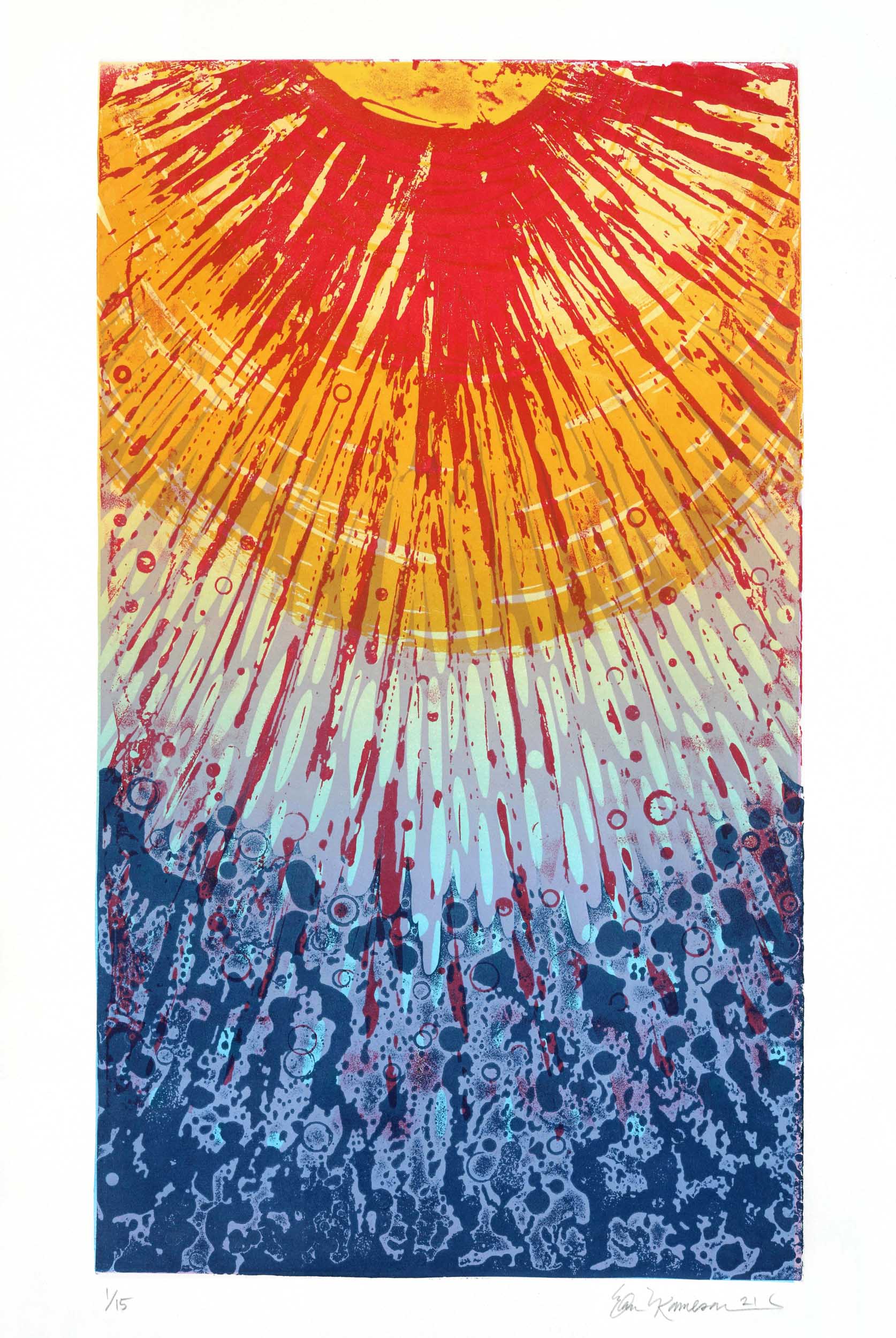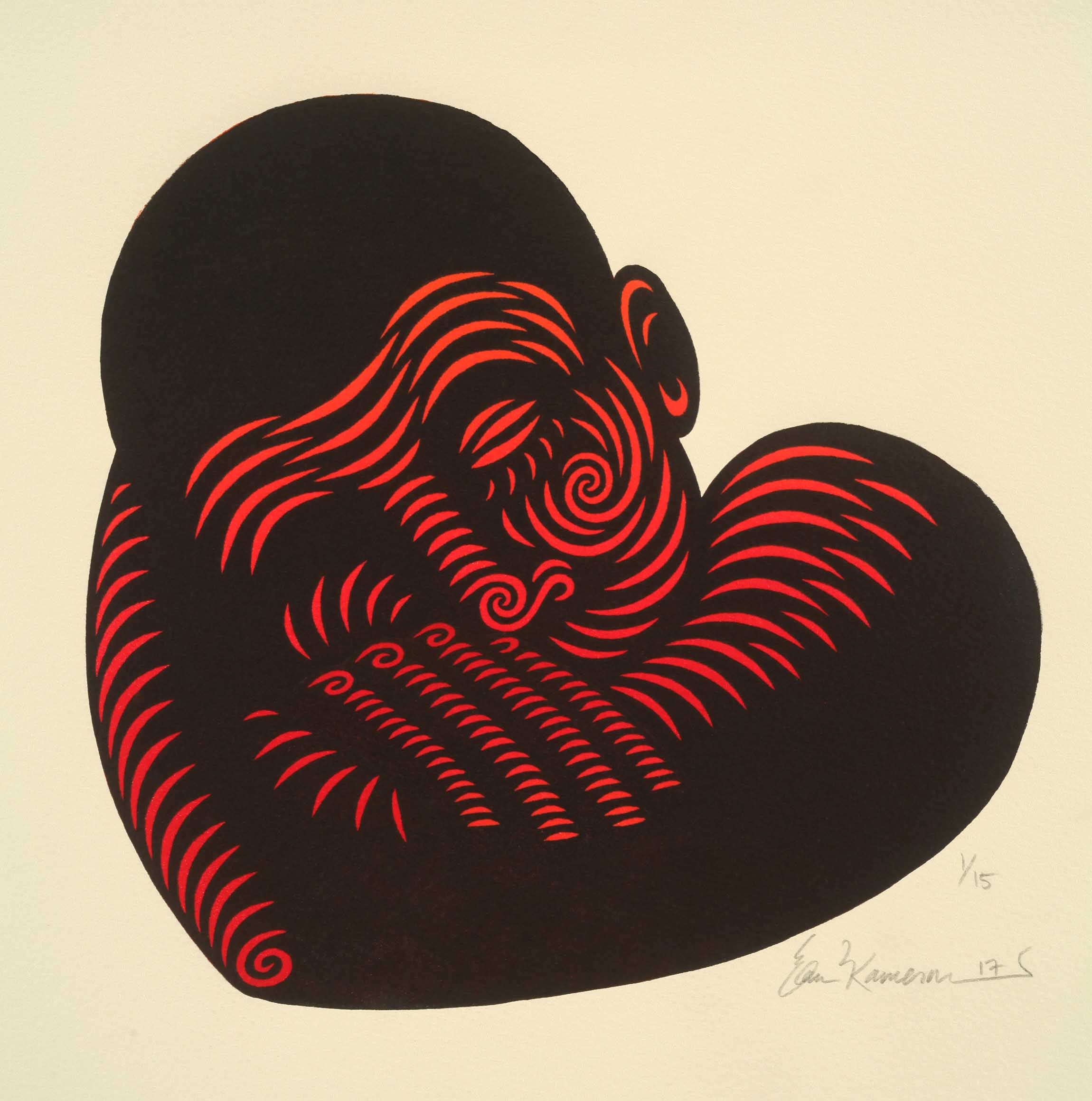Linoleum Cut (also referred to as Relief Printmaking) is a process that begins by carving marks in to linoleum (or other material, such as wood). Then ink is rolled across the surface of the block and printed on to paper by applying pressure. In this way it is generally the high relief, or untouched surface which receives ink and prints on to the paper, and not the marks by the artist which create carved depressions in the block and hence do not receive the ink as it is rolled across the block’s surface. This positive/negative interplay between mark making and printing can make for very alive image making.

The process gets more complicated when there are multiple colors in a print as each color is printed from its own surface. There are generally two ways to print multiple colors. One is to carve a separate block for each color. The other is the reductive process by which the artist sequentially carves and prints from the same block in successive printings to build up the piece one color at a time. This is a one way process in which the block is constantly being “reduced” by further carving in between printing runs, and there is no way to back track because as the block is modified, the original surface used to print earlier colors no longer exists. Hence it is a process that requires foresight. At times it can be nerve racking, but there is no feeling quite like pulling the final print from the press and in an instant seeing the result of such a long and elaborate process.



